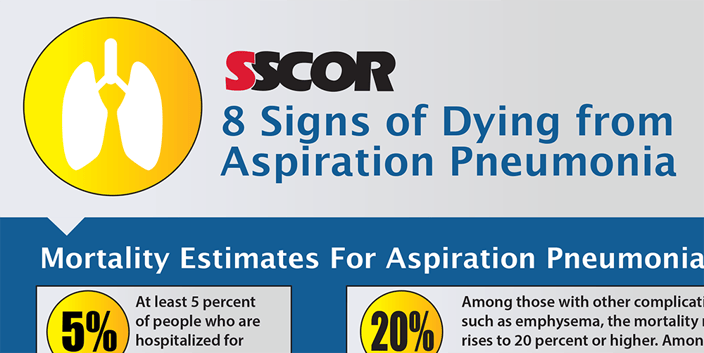
While the mortality rate of aspiration pneumonia depends on complications of the disease, the 30-day mortality rate hovers around 21%, with a rate of 29.7% when hospital-associated. For uncomplicated pneumonia, the mortality rate is still high – around 5%.
These stats mean that first responders, doctors, nurses, and other healthcare providers should always treat aspiration pneumonia as a medical emergency with a high mortality risk. Diligent airway management can prevent aspiration pneumonia in many emergency and surgical scenarios, and prompt emergency intervention can reduce aspirate volume in people actively aspirating.
Risk Factors for Aspiration Pneumonia
Patients face an increased risk of aspiration pneumonia when:
- They have problems swallowing.
- They have recently had a stroke – 40% of stroke survivors have swallowing dysfunction, which is a major risk factor for aspiration.
- They have dementia or another cognitive disability.
- They have an impaired gag reflex.
- They use sedating medications or are in an altered state of consciousness.
- They have a respiratory disorder.
- They have mobility impairments or a spinal cord injury.
- They have gastroesophageal reflux disease (GERD).
Helping patients get into and sustain a safer position for swallowing can significantly reduce the risk of aspiration in those with the highest risk.
Signs and Symptoms of Aspiration Pneumonia
When patients have impaired mobility, dysphagia, or breathing difficulties, medical personnel should always evaluate them for aspiration. Some signs and symptoms of aspiration pneumonia include:
- Blue lips, tongue, or skin
- Gagging and coughing
- Shortness of breath or trouble breathing
- Chest pain
- Sweating without exertion
- Raspy sounds from the throat or chest
- Breath odor
- Sputum that is discolored and foul-smelling which may contain blood or pus
Complications of Aspiration Pneumonia
In the immediate aftermath of aspiration, a patient may be unable to breathe or swallow, presenting a medical emergency. After the risk of hypoxia has passed, the dangers of aspiration pneumonia have not. Aspiration pneumonia can cause numerous complications, including:
- Sepsis
- Respiratory failure
- Acute respiratory distress syndrome (ARDS)
- Bacterial pneumonia
People with the highest risk of dying from aspiration pneumonia may have swallowed large volumes of aspirate or have signs of infection. Continued monitoring can prove life-saving, especially in patients at risk of aspirating a second time.
The Right Treatment Matters
Aspiration presents an immediate risk of choking and hypoxia, so promptly clearing the airway is critically important. Following an aspiration event, patients may need hospitalization and continuous monitoring, especially if they swallowed a large volume of contaminated fluid.
The right suction machine can help you promptly intervene to stop or prevent aspiration and to reduce the volume of aspirate a patient inhales. The volume and content of the aspirate are the single biggest mortality predictors, so prompt intervention is a major predictor of survival.
SSCOR offers a range of emergency portable suction machines that enable you to promptly tend to aspirating patients wherever they need care. For help choosing the right machine for your agency, download our free guide, The Ultimate Guide to Purchasing a Portable Emergency Suction Device.
Editor's note: This blog was originally written December 2024 and has recently been updated.
















